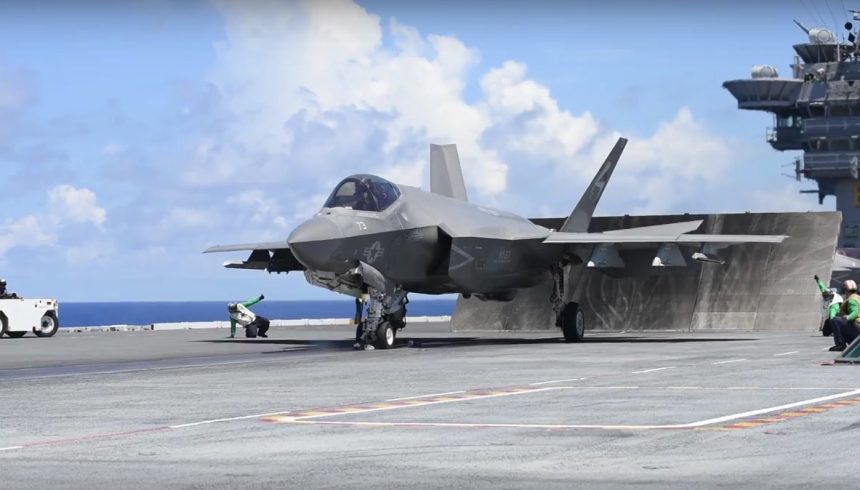Report: F-35Cs Descend in Mass on the USS George Washington During DT-III.
The USS George Washington (CVN-73) is hosting the F-35C in its final Developmental Testing cycle, DT-III through Aug. 23.
However, for a couple of days the two VX-23 “Salty Dogs” F-35C Lightning IIs from NAS Patuxent River were joined by 5 F-35Cs from VFA-101 “Grim Reapers” out of Eglin AFB. The 7 F-35Cs on the deck of the carrier represented the largest carrier contingent of F-35Cs to date.
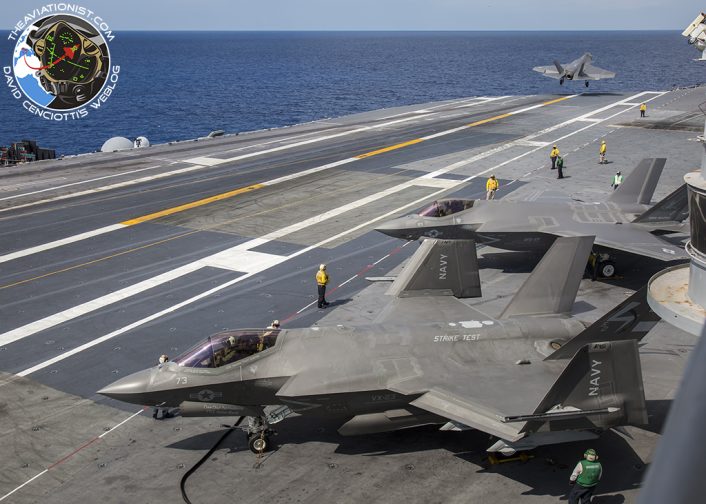
Media were hosted on the USS George Washington Monday, Aug. 15 to witness the pilots completing their carrier qualifications (CQs) at the onset of DT-III. All pilots embarking must perform a number of “cats” and “traps” prior to executing the specific tests involved with DT-III.
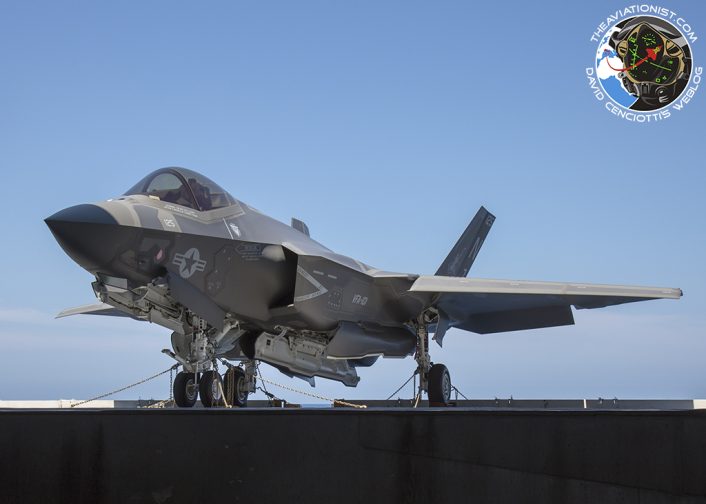
DT-III includes validation of the aircraft’s flying capabilities with full internal and external stores (up to 4 GBU-12s and two AIM-9X on external hard points); handling tests with asymmetrical loads; testing for maximum weight launches (up to 65,000 lbs) at minimum power; evaluating all of these in a variety of wind and sea states.
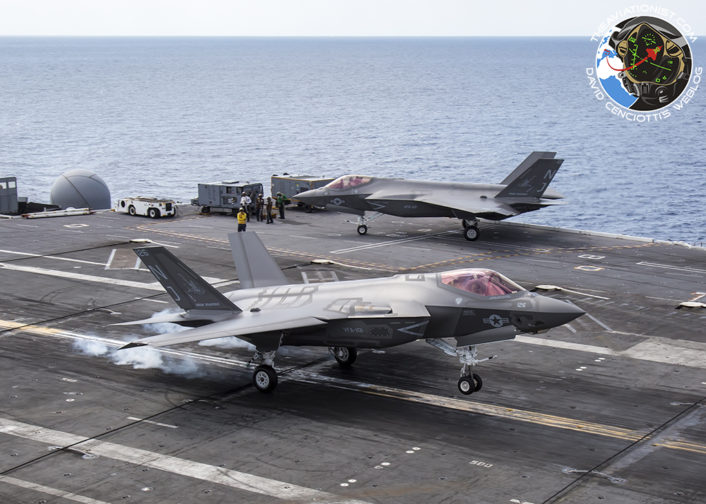
As explained by Tom “Briggo” Briggs ITF (Integrated Test Force) Chief Test Engineer there were some additional aspects they wanted to evaluate. These areas to assess included shipborne evaluation of tweaks made to control laws (based on previous DT testing), shipborne logistical support and some night launches to verify adjustments made to the Gen 3 helmet performed as desired.
The ITF (Integrated Task Force) and supporting team of personnel have worked tirelessly to bring the program to this point, and yet the reality of DT-III was – “business as usual.”
Media probed for human interest stories from the cadre of pilots on board, “What was it like, after all the simulator hours and practice landings at the airfield to actually land on the ship?” From pilots who had 50 traps with the F-35C to those who had just realized their first – they struggled to provide any other answer; “no drama, no surprise, performed as expected, very vanilla, pretty easy.”
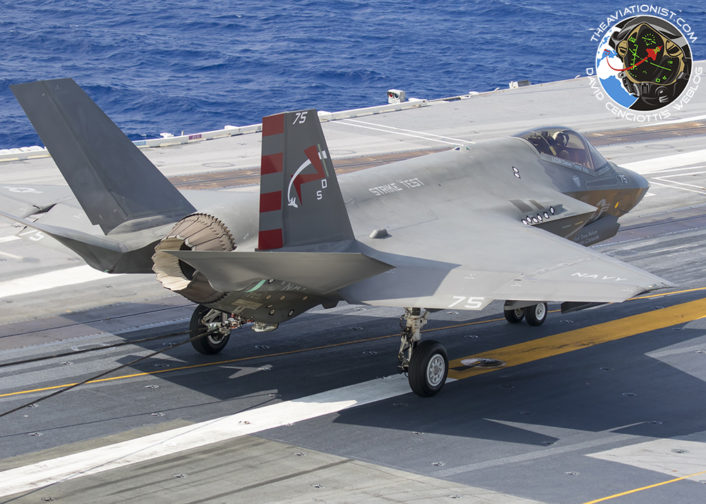
The preparation had been solid and thorough and DT-III itself was simply moving according to plan – that is if you can plan to be ahead of schedule after only 1.5 days!
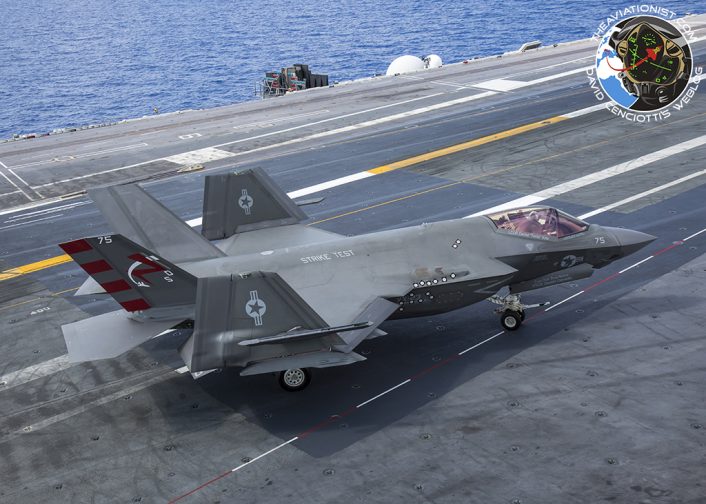
In many ways DT-III was “upstaged” by the appearance of VFA-101, and yet it was upstaged in a fashion that brought ultimate satisfaction to the ITF’s efforts.
As U.S. Navy Commander Ryan “Flopper” Murphy, F-35 ITF lead said, “the greatest satisfaction was to watch the fleet (VFA-101) start to utilize the aircraft.” After all, that was the point of all the years of work; to equip and empower the Fleet with the F-35C.
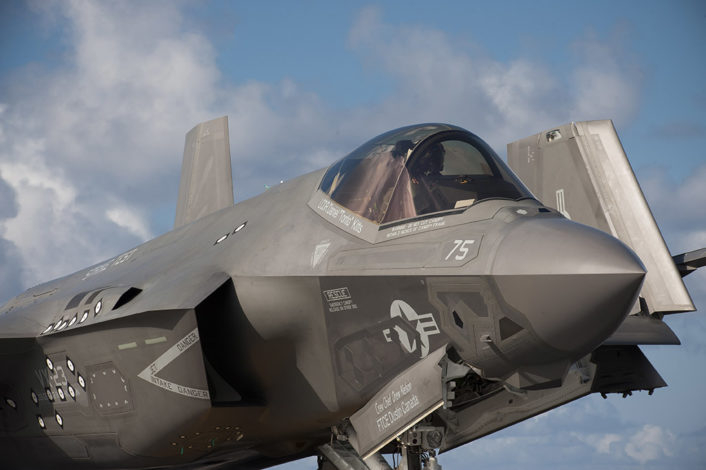
ATLANTIC OCEAN (Aug. 14, 2016) Lt. William Bowen taxis in an F-35C Lightning II carrier variant, assigned to the Salty Dogs of Air Test and Evaluation Squadron (VX) 23, on the flight deck of the aircraft carrier USS George Washington (CVN 73). VX-23 is conducting its third and final development test (DT-III) phase aboard George Washington in the Atlantic Ocean. The F-35C is expected to be Fleet operational in 2018. (U.S. Navy photo by Mass Communication Specialist 2nd Class Alex L. Smedegard)
12 VFA-101 pilots with 5 F-35Cs completed their CQs in just over 1.5 days. As Capt. James Christie of VFA-101 described, that includes 10 landings and 2 touch and gos each. A total of 120 cats, 120 traps and 24 touch and goes. Simultaneously the 5 VX-23 pilots performed their CQs. F-35Cs were all over the carriers deck, moving, landing, and launching – much like I would imagine an operational tempo.

There were instances of hot refueling, with pilot changes during refuel and the aircraft cycling back for more CQs.
As VX-23 F-35C pilot Ted “Dutch” Dyckman explained, everybody completed their CQs faster than with the Hornet or Super Hornet. The additional fuel on the F-35C, the ease of landing due to Delta Flight Path mode, along with aircraft reliability all played a part in the accelerated CQs.
The innovative “Delta Flight Path” mode that is engaged on approach alters the F-35C control laws, setting auto throttles and maintaining the optimal 3 degree glide slope to landing. This approach makes landing on the carrier much easier, and pilots were hitting the desired 3 wire virtually 100% of the time.
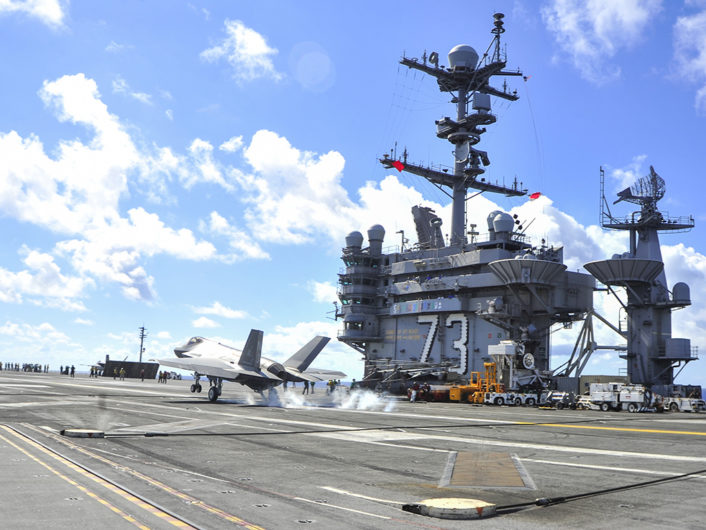
ATLANTIC OCEAN (Aug. 14, 2016) An F-35C Lightning II carrier variant assigned to the Grim Reapers of Strike Fighter Squadron (VFA) 101, the Navy’s F-35C Fleet replacement squadron, lands on the flight deck of the aircraft carrier USS George Washington (CVN 73). VFA-101 aircraft and pilots are conducting initial qualifications aboard George Washington in the Atlantic Ocean. The F-35C is expected to be Fleet operational in 2018. (U.S. Navy photo by Mass Communication Specialist Seaman Apprentice Krystofer Belknap)
Delta Flight Path utilizes the flaps to add or decrease lift during approach to maintain the glide slope. Observers can see a tremendous amount of flap movement during the aircrafts approach to the deck.
These movements are all controlled by the computer to provide the pilot what they want – stable glideslope to the deck. The F/A-18E/F and EA-18G control laws are being modified to feature the same Delta Flight path in an initiative called “Magic Carpet.”

As Briggs explained, DT-III is to prepare the aircraft launch and recovery bulletins (ALB/ARB). These are the operating guides the Navy will utilize to determine the appropriate launch and recovery parameters for the aircraft, given weights and conditions. These bulletins are required for operations, and ensure the aircraft can safely launch and recover with the desired loads to complete assigned missions.
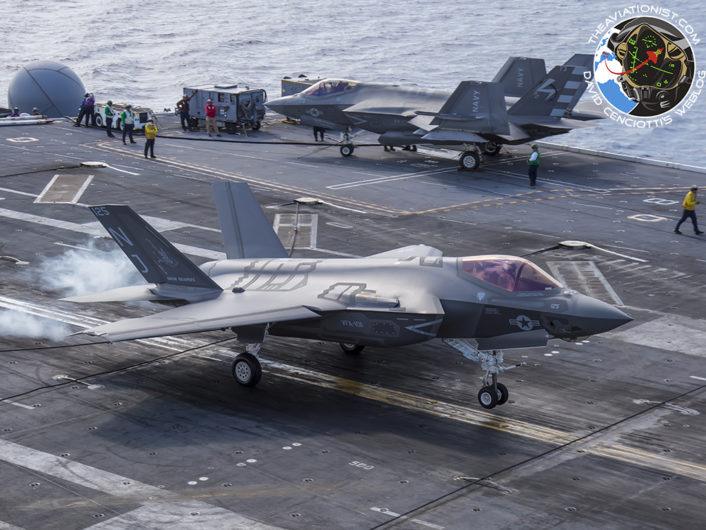
Recently appointed to the new position, Director of Joint Strike Fighter Fleet Integration, Rear Admiral Roy “Trigger” Kelley was also aboard the USS George Washington. Kelley will be directing the F-35C program towards IOC between August 2018 and Feb 2019. Kelley is excited about the capabilities the F-35C will bring to the Fleet; first day access into contested areas that host sophisticated integrated air defense systems; the ability to utilize stealth and sensors to define the battlespace combined with advanced command and control capabilities that will empower the entire fleet.
DT-III is a significant milestone, and it is clear the F-35C is now tracking very quickly and methodically to a IOC with the U.S. Navy.
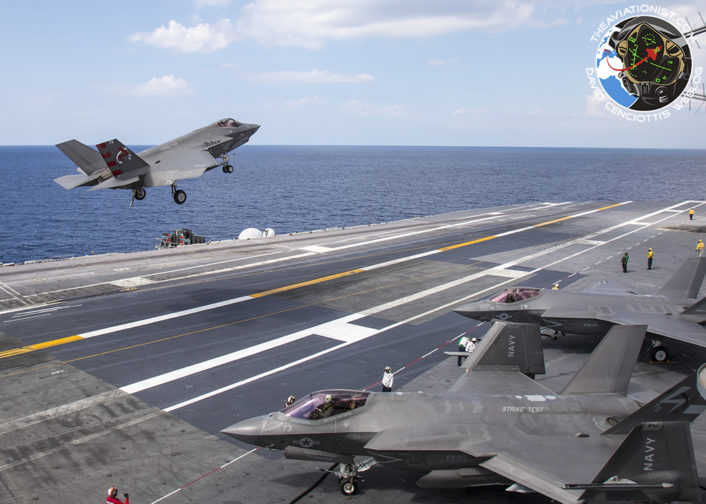
The Aviationist would like to thank the following for their support: Sylvia Pierson, F-35 ITF/JPO PA; CDR Dave Hecht, Naval Air Force Atlantic PAO; Capt. Timothy Kuehhas, CO USS George Washington; and the many supporting PAOs on and off shore, pilots, engineers, and C-2 Greyhound crews. The entire US Navy team were professional, gracious hosts.
Image credit: U.S. Navy and Todd Miller
Related articles

